The Key To Better Strength Training Workouts
Sports Performance | Strength & ConditioningWhen building the perfect strength training program one thing you will need is the ability to adapt and change. That is where undulating periodization comes in.
Ryan gives us some insight on how to build better training programs. How to be versatile and able to change programs when needed.

Ryan Leibreich
Ryan is the Director of strength and conditioning at Pro Performance RX In Morgantown, West Virginia. Ryan has been working in the private sector with hundreds of youth athletes for the last 5 years. He is always excited to talk training and dig deep into the Why. Never stop learning, growing and adapting. In the great words of Bruce Lee be like water. To connect further with Ryan reach out to [email protected]
// Strength Training With Undulating Periodization
Build the Perfect Strength Training Program with Undulating Periodization!
For the low price of 19.99, if you order within the next 30 minutes, we will give you the best, most awesome program for all athletes, at all times, in all situations.
Just load it up and you’ll create monsters!
🙄
Now that I have everyone’s attention, listen up.
Here is the start to building better programs and understanding how undulating periodization strength training programs work.
3 hard to swallow truths that will improve everything in strength and conditioning:
Your Title Goes Here
Your content goes here. Edit or remove this text inline or in the module Content settings. You can also style every aspect of this content in the module Design settings and even apply custom CSS to this text in the module Advanced settings.
Truth Number 1
There is no perfect.
Truth Number 2
“If you don’t stand for something, you will fall for anything”
Create principles for your program.
Truth Number 3
There are no secrets.
Stop searching for the one special movement or arguing over a specific exercise.
The Periodization Method To Strength Training
Navigate the day to day chaos to better benefit your athletes and get the most out of them.
“Systems are everything.” – Every successful large company
The next few paragraphs we will dive into the nuts and bolts of building a foundation for programming and the unique touches and aspects to utilizing an undulating programming method that we use everyday at our facility
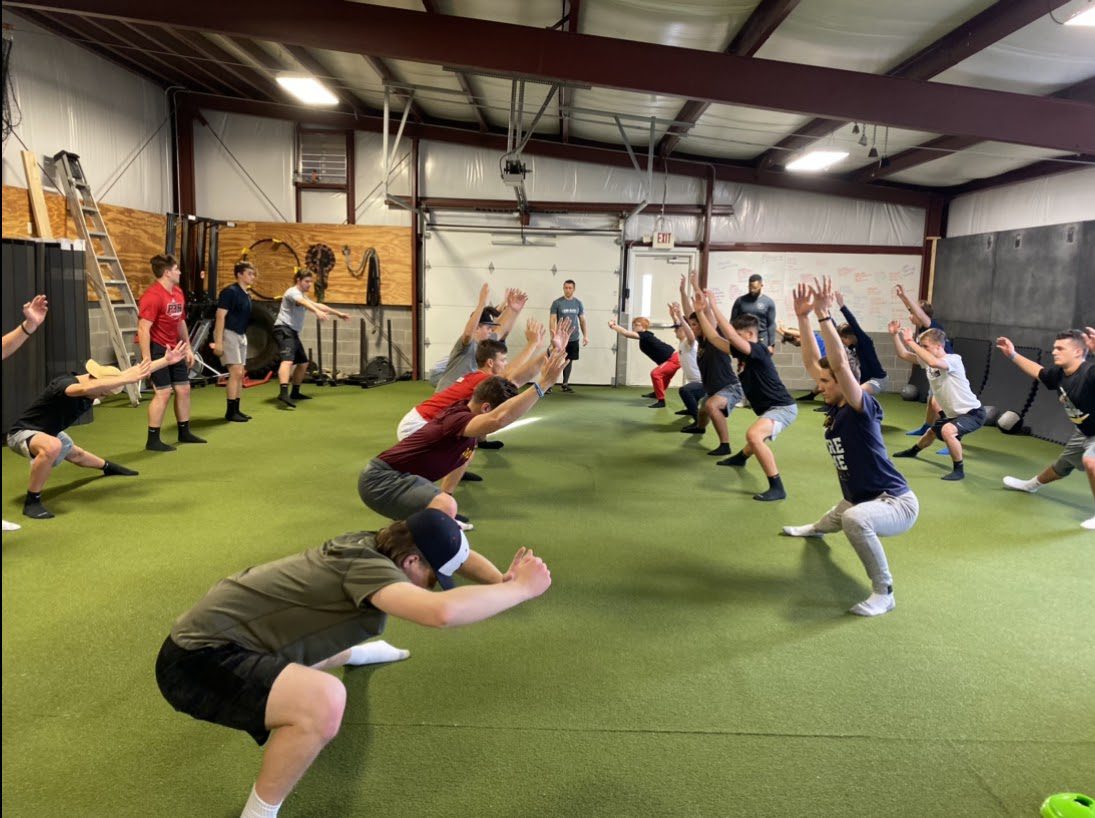
What Is An Undulating Periodization Strength Training Program?
It is a program with a dynamic scheme that allows for weekly and daily fluctuations and changes while still having a base structure to build off of.
No more of the strict old 4 and 8 week block programming.
Here is the reality. Things happen and change constantly. Controlled chaos is the life we live and need to understand in order to be able to build the best programs.
Taking a step back, let’s start with:
Building a foundation of principles.
Movements
- Squat
- Hip Hinge
- Push- Horizontal and Vertical
- Pull- Horizontal and Vertical
- Carries
- Crawls
- Core and everything else
// Utilize Bilateral and Unilateral Movements In Your Strength Training
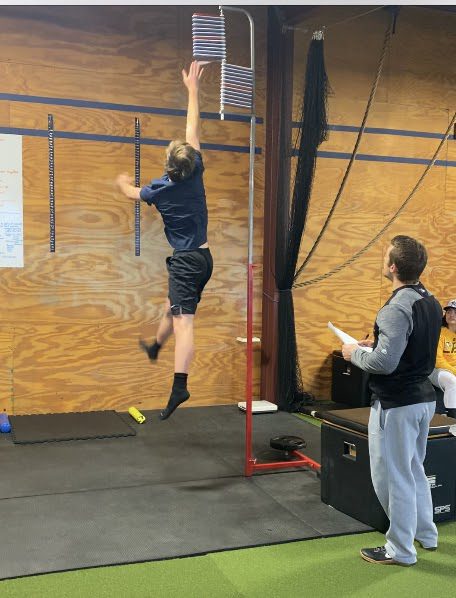
Train In All Three Planes Of Motion
Train in all 3 planes of motion
- Sagittal – forward/backward motion, dividing the body into right and left sides
- Frontal – side-to-side motion, dividing the body into the front and back
- Transverse – twisting/rotation motions, dividing the body into top and bottom
Don’t forget to sprint and move fast. I believe we sometimes forget to do this one.
Every great program fills the buckets for all of those movements. These are non-negotiables.
Fill Up The Buckets
What are buckets?
Think of a strength training program as a table with a lot of buckets on it.
There are many different types of buckets (ones with holes, big ones, small ones, etc.).
Here is the catch: you only have a limited supply of water to fill them up. Which ones do you pick?
You can only fill them up so far before they spill over and become a mess, so we must choose wisely. Now, relate this to a strength and conditioning program.
An athlete can only handle so much intensity, volume and exercises before they get overwhelmed and exhausted (mentally and physically overflowing). Same things apply to coaches and programming too.
This is where we take a step back and analyze.
There is no need to try to do everything. Pick what is really important. Basics are always important. These basics are the principles our programs should be based on.
Do we have the basics covered: push, pull, hip hinge, squat, carry, and core?
Only once the basics are established should we ever consider adding more. Cut out the excess.
// How We Program For Strength Training
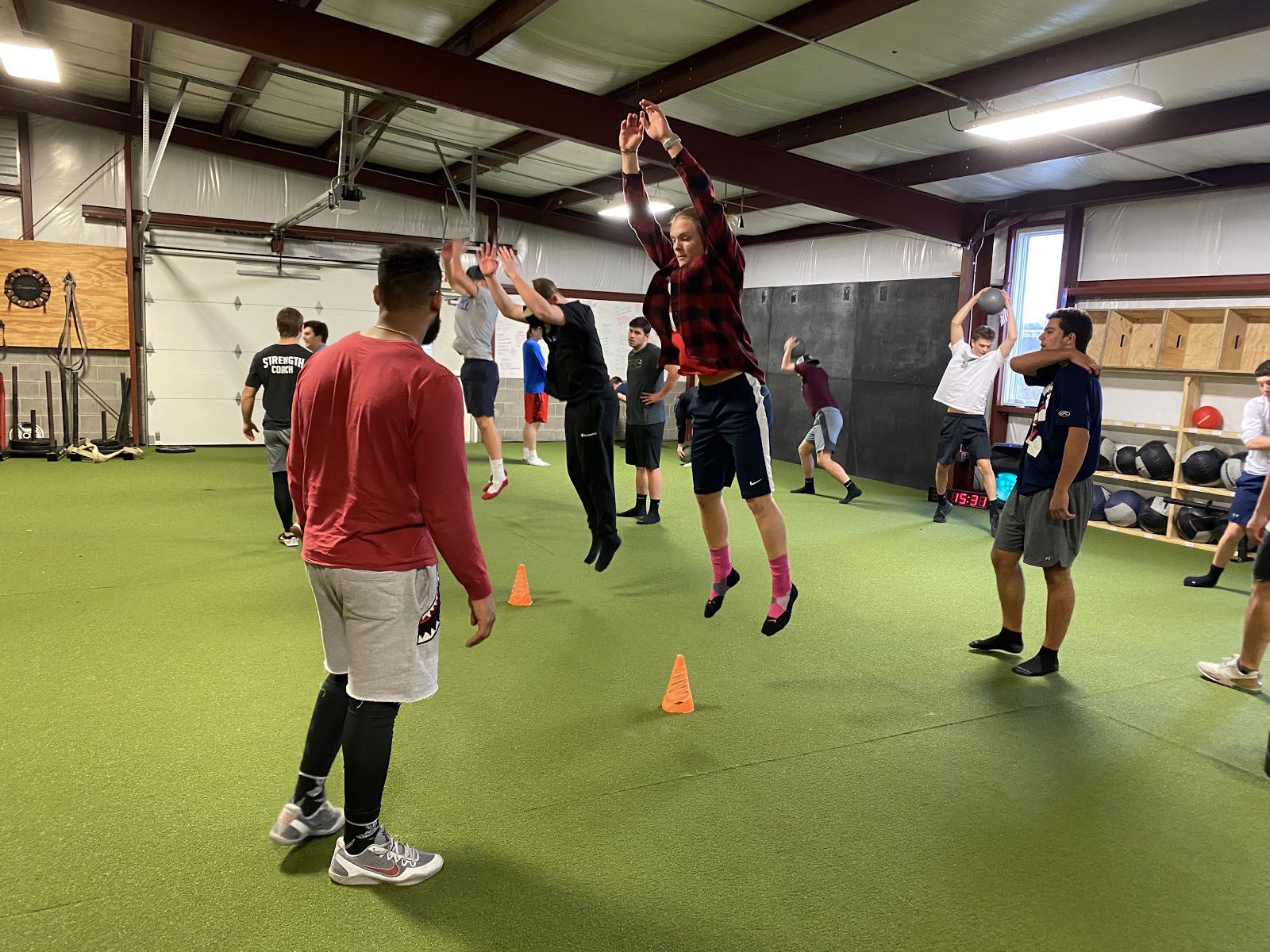
Traditional
What your books sometimes teach you
- Volume – sets, reps, etc
- Frequency – times per week
- Length of session
- Equipment
- Space
- Number of athletes
- Tempo
- Equipment
- Position
Non-Traditional
Real Life Motivators
- Fun
- Novelty
- Engagement/Focus
- Mental Toughness
- Maturity
- Encouragement
- Gym flow
- Boredom
- Readiness/sleep/nutrition
The number of factors and things you can change can be endless so don’t drive yourself mad.
Stick to a few main ones and change things from there.
Otherwise, you will fall back into the paralysis by analysis problem.
Example Of A Strength Training Program
Example 1
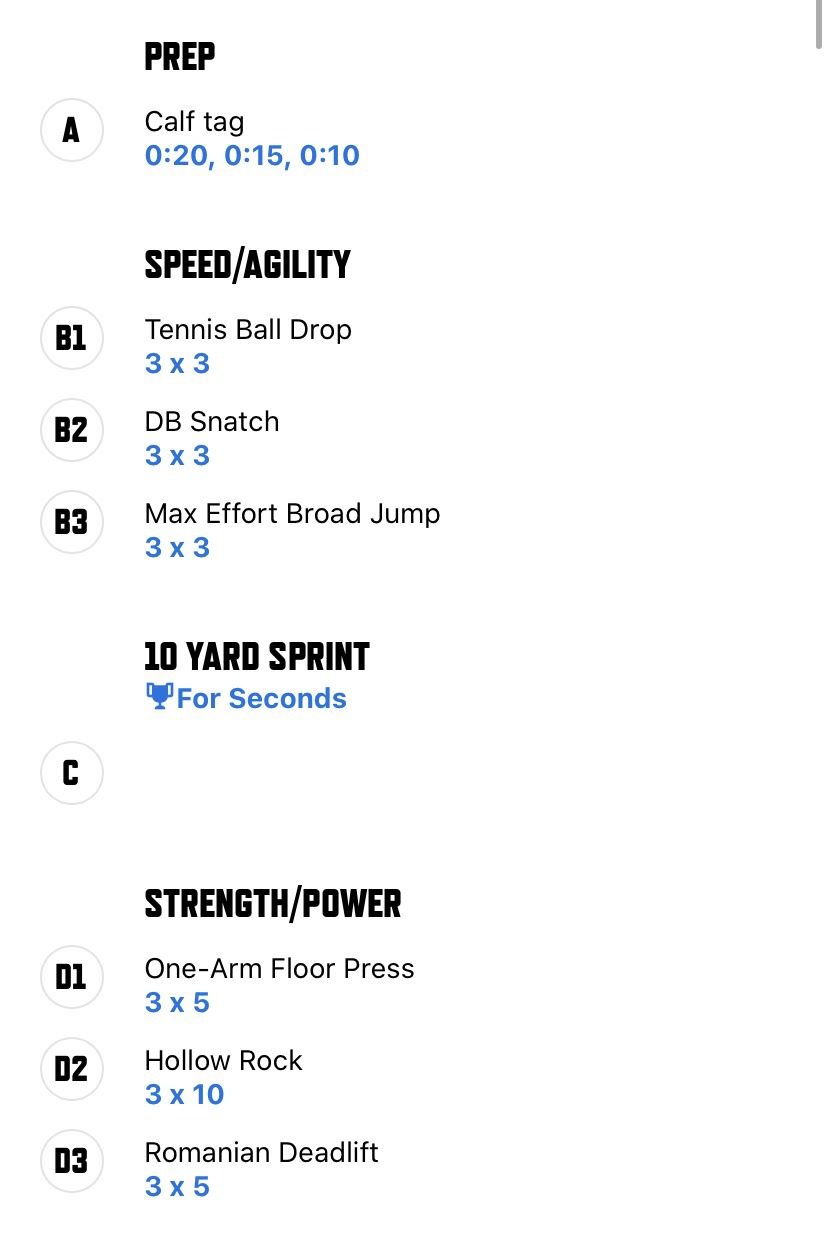
Undulating periodization programming with weekly volume in sets and reps. This one is pretty straight forward.
Think light, medium, and heavy.
Movement= Romanian Deadlifts
Day 1: Moderate weight at 3 sets of 5 reps. Build the pattern under some stress.
Day 2: Of the same movement we go light weight 3 x10. Re-establish good form and time under tension.
Day 3: Same movement 3 x 3 super heavy. Make the athletes grind it out and work on maintaining proper technique under a real challenge.
Example 2
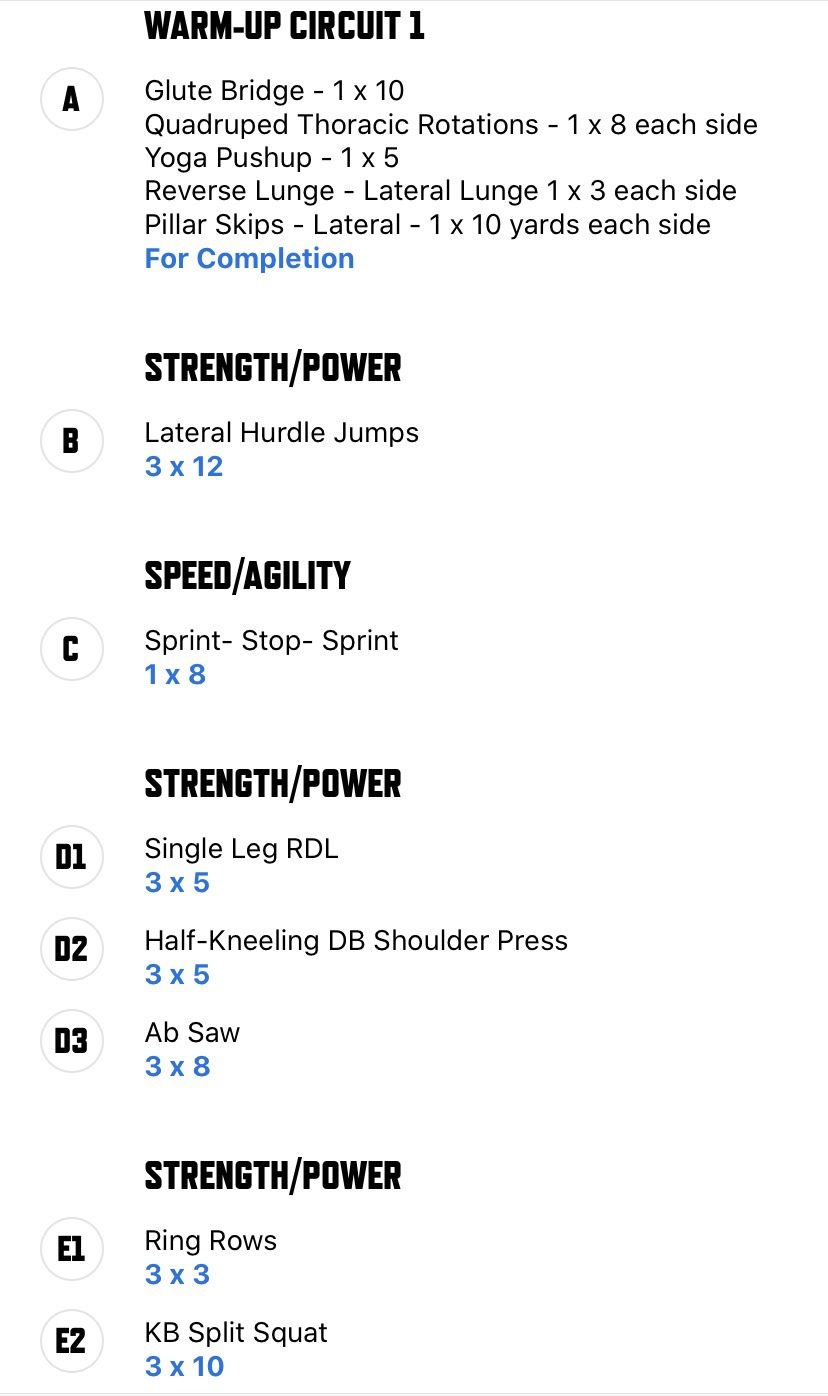
Undulating with exercises.
Sticking with our hip hinge motion.
Day 1: RDL
Day 2: Sumo Deadlift
Day 3: 1 leg Romanian Deadlift
Still the same movement pattern but we alternated positions, angles and unilateral and bilateral.
This allows for the change in volume and fatigue in certain areas.
Thinking in depth on it, an RDL is a little more hamstring dominant, but then we move to a sumo which requires a little more quad and adductor while still maintaining the hip hinge pattern and putting a little less stress directly on the hamstring.
Finally a 1- leg RDL that while hard, can get us a little more time under tension and a decrease in total weight moved compared to the previous two movements thus allowing a little more central nervous system recovery.
Example 3

Undulating with whole workouts based on an athlete’s readiness.
Wednesday our athletes come in from an away game: tired, no sleep, no breakfast.
What we do = Alter volume or switch workouts
The next day, Thursday morning, our athletes get out of school early, all have smiles and look to have had an awesome day and are well rested. What do we get after it?
Maybe add an extra set or two or an impromptu team challenge workout at the end.
Where Is The Undulating Part?
Well, there it was.
We changed things both days, but by the end of the week we still covered our movements, planes of motion and volume etc.
It is as simple as changing things with one or two factors.
What I want to be taken from this article today is alternative ways to view programming so you can be more successful in implementing the programs you make and do.
Again, 3 different factors done 3 different ways allowing one result= success with being adaptable and allowing your programs to evolve and change with the current situations.
When Strength Training Start With A Why
A simple system:
- Step 1 – Identify your goal
- Step 2 – Write out a program based on time, equipment, athletes, etc.
- Step 3 – Review sets, reps, movement patterns, and planes of motion
- Step 4 – Adapt as needed- Session/Day/Week/Month/Year
- Step 5 – Revise and repeat
Small changes make for big impacts. Do not alter everything you are currently doing. You do not necessarily need to have every movement pattern and every plane of motion in every workout.
You just need to make sure you have it covered by the end of each week.
Review what you are doing, identify the gaps in the planes of motion, movements, or programming factors and make one change. Work with it and adapt it.
TAKE YOUR TRAINING
TO THE NEXT LEVEL
The TrainHeroic Marketplace
TrainHeroic brings online training and strength programs to life with an unmatched imersive training experience delivered directly to your phone. Browse our Marketplace for thousands of programs or take your training up a notch by joining an online community with fresh programming and coaching by some of the biggest names in the strength game starting at $15 / month.
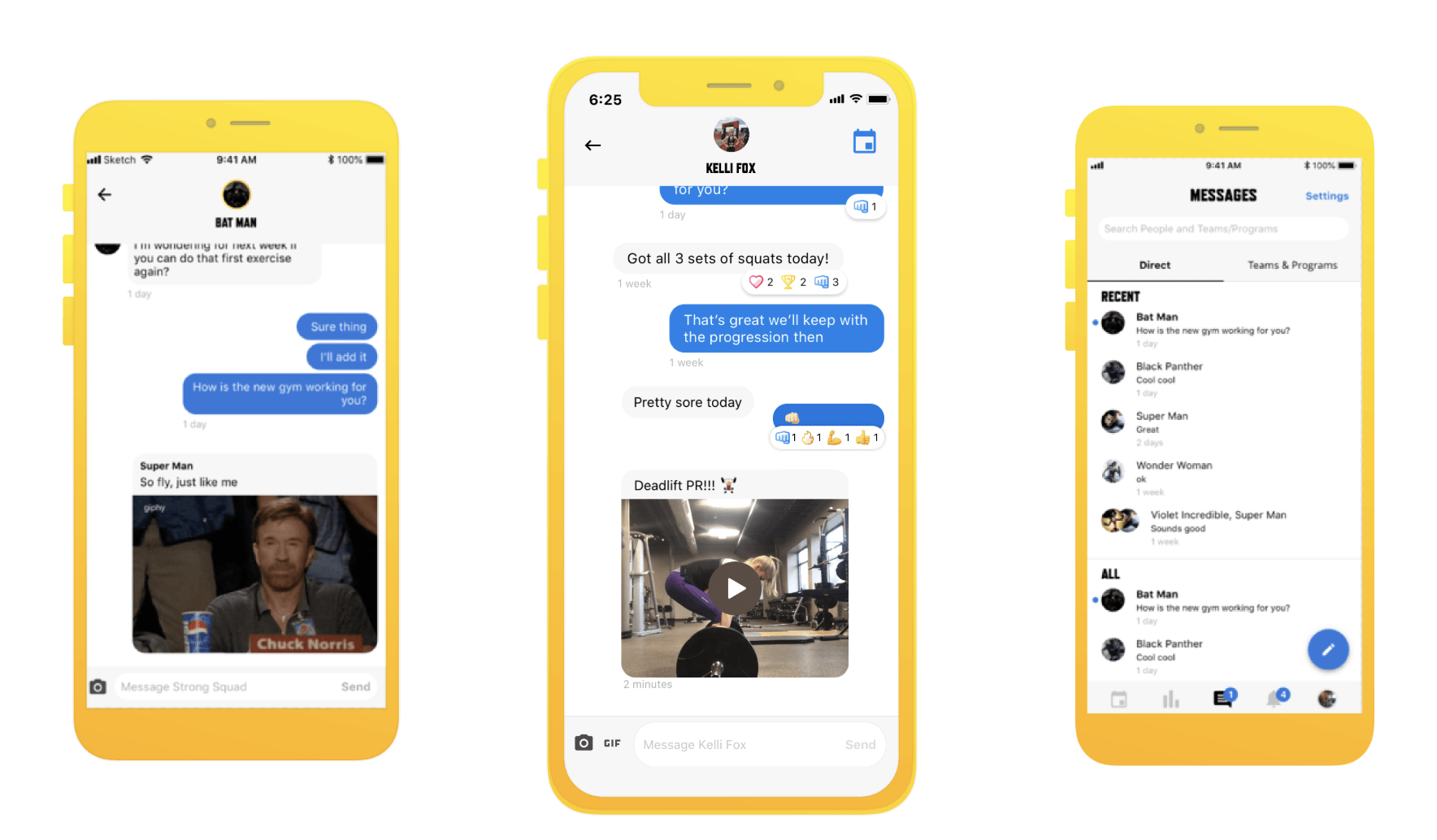
READY TO TRY TRAINHEROIC?
Our powerful platform connects coaches and athletes from across the world. Whether you are a coach or trainer looking to provide a better experience for your clients, or you’re an athlete looking for expert programming, click below to get started.
Want more training content?
More coaches and athletes than ever are reading the TrainHeroic blog, and it’s our mission to support them with the best training & coaching content. If you found this article useful, please take a moment to share it on social media, engage with the author, and link to this article on your own blog or any forums you post on.
Be Your Best,
TrainHeroic Content Team
HEROIC SOCIAL
HEROIC SOCIAL
TRAINING LAB
Access the latest articles, reviews, and case studies from the top strength and conditioning minds in the TH Training Lab

